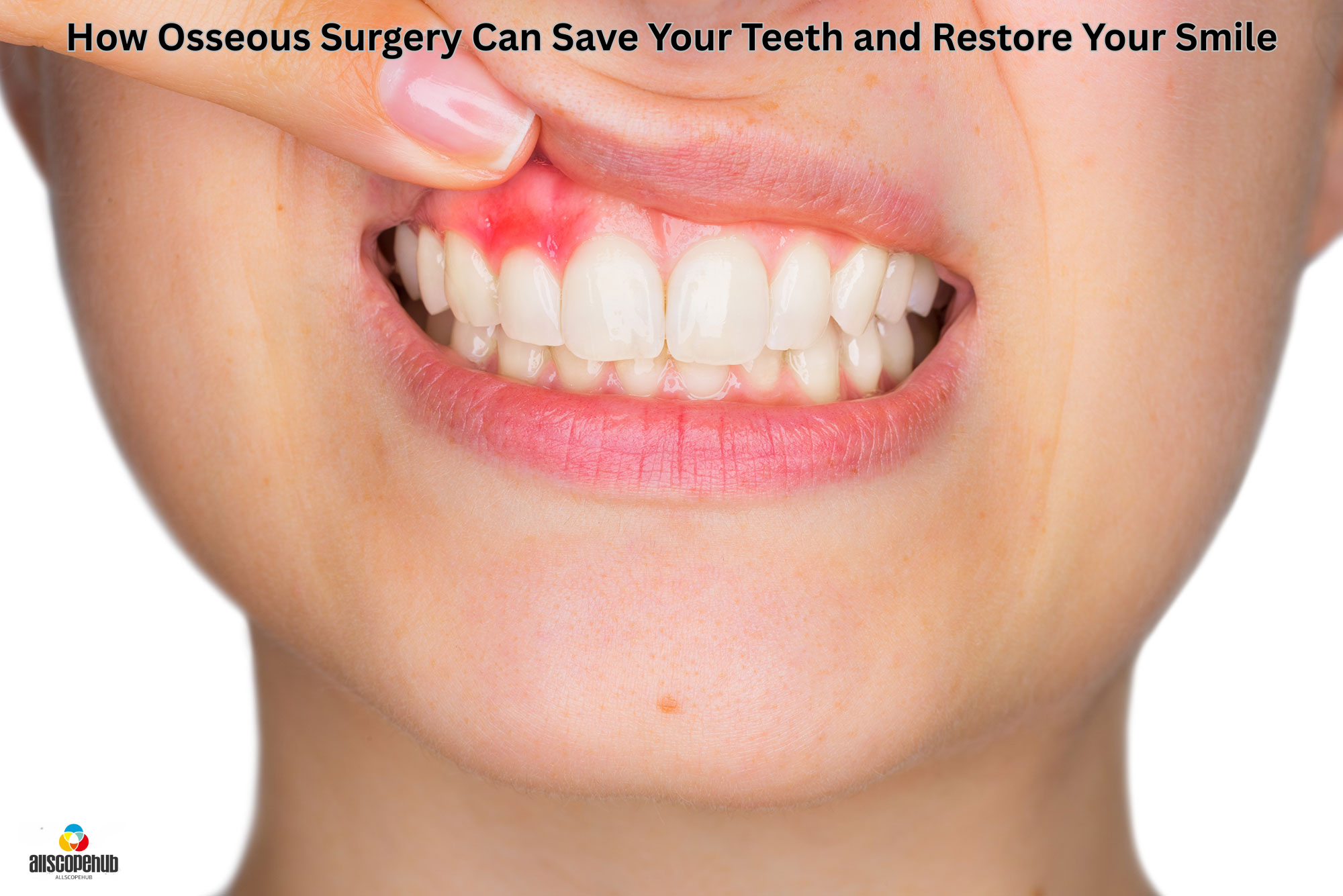Reclaim Your Smile. Repair Your Confidence. Protect Your Teeth.
Let’s face it—we all want to keep our natural teeth as long as possible. But when gum disease hits hard and deep, brushing and flossing just aren’t enough. That’s where osseous surgery comes in. We’ve seen firsthand how this treatment can stop gum disease in its tracks and save people from tooth loss. If your dentist has recommended it, don’t panic. In this article, we’ll explain everything you need to know in plain language. Whether you’re nervous, curious, or ready to take action, you’re in the right place.
What Is Osseous Surgery?
At its core, osseous surgery is a deep-cleaning surgical procedure for treating advanced gum disease. It targets the areas under your gums where bacteria love to hide—deep pockets around your teeth that regular cleanings can’t reach. Dentists use this surgery to remove tartar buildup, reshape damaged bone, and help your gums reattach properly.
So, what happens during the procedure? After numbing the area, your dentist or periodontist will fold back your gum tissue, clean out the infection, smooth the bone if it’s irregular, and then stitch your gums back into place. It might sound intense, but it’s usually done in under an hour and has a surprisingly short recovery time.
Who Needs Osseous Surgery?
This procedure isn’t for everyone—but if you’ve got moderate to severe periodontal disease, it could be your best bet. Common signs you might need it include:
- Bleeding gums when brushing or flossing
- Chronic bad breath
- Gum recession
- Deep pockets around your teeth
- Loose teeth
If left untreated, gum disease doesn’t just hurt your smile—it can lead to serious health issues, including bone loss and tooth loss.
Benefits of Osseous Surgery
Osseous surgery offers some powerful benefits:
- Saves teeth: The main goal is to help you keep your natural teeth for as long as possible.
- Reduces pocket depth: Deep pockets trap bacteria, and surgery helps eliminate them.
- Stops disease progression: Once cleaned and reshaped, your gums can heal better.
- Improves oral hygiene: Smaller pockets are easier to clean with daily brushing and flossing.
- Boosts confidence: A healthier smile feels better.
According to the National Institute of Dental and Craniofacial Research, gum disease is a leading cause of tooth loss in adults, and surgical treatments like osseous surgery are often needed to avoid severe damage.
What to Expect During and After the Procedure
It’s natural to feel a little anxious before a dental procedure—but knowing what to expect can help.
During the procedure:
- Your mouth will be numbed so that you won’t feel pain.
- The dentist will make small incisions in your gums to access the infected pockets.
- Tartar and bacteria will be thoroughly removed.
- If necessary, the bone will be smoothed to reduce bacteria hiding spots.
- The gums are stitched back for optimal healing.
After the procedure:
- You might have some swelling or discomfort, but over-the-counter meds usually help.
- Soft foods and good oral hygiene are key during recovery.
- You’ll likely have a follow-up visit to check healing.
Before and After Osseous Surgery
Here’s where things get real. Most people don’t realize just how much of a difference this surgery can make.
Before:
- Gums may bleed and look swollen or inflamed.
- Pockets around your teeth are deep and infected.
- Bone loss may already be in progress.
- Bad breath and discomfort can be constant.
After:
- Gums fit more snugly around the teeth.
- Inflammation and bleeding are dramatically reduced.
- Oral hygiene becomes easier.
- Confidence returns along with a healthier, cleaner smile.
This isn’t just about looking good—it’s about protecting your teeth and health for the long haul.
Common Myths About Osseous Surgery
Let’s bust a few myths, shall we?
Myth #1: It’s excruciating. Truth: It’s done under local anaesthesia, and recovery is usually mild.
Myth #2: It’s only cosmetic. Truth: It’s primarily medical—focused on halting gum disease.
Myth #3: It doesn’t work long-term. Truth: With good aftercare, results can last for years.
Still, feeling unsure? The VCU School of Dentistry offers detailed insight into periodontal treatments like this, and their patient outcomes show just how effective osseous surgery can be.
Tips for a Smooth Recovery
Want to bounce back faster after your surgery? Follow these simple steps:
- Stick to soft foods like yoghurt, smoothies, and soup for the first few days.
- Avoid spicy or crunchy foods.
- Use a prescribed mouth rinse or warm saltwater rinse.
- Take meds as directed.
- Don’t skip your follow-up appointment.
- Brush gently and avoid flossing near the stitches until your dentist gives the green light.
Remember, healing takes time—but every day brings you closer to a healthier smile.
Final Thoughts: Your Smile Is Worth It
We get it—surgery isn’t something anyone looks forward to. But if gum disease is threatening your teeth, osseous surgery can be the game-changer you need. It’s not just about treating symptoms—it’s about fixing the root of the problem and giving your gums and bones the best shot at healing.
We’ve seen how this treatment saves teeth, boosts confidence, and restores quality of life. If your dentist has recommended it, don’t wait. Ask questions. Learn more. And most importantly—take that next step.
Call to Action
If you’re dealing with gum issues or think osseous surgery might be right for you, don’t wait for things to get worse. Reach out to your periodontist and ask for a personalized evaluation. Your smile is worth fighting for—and this might be the best move you ever make for your dental health.



